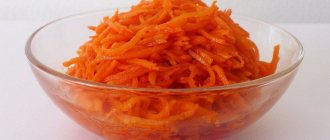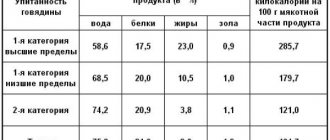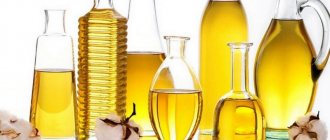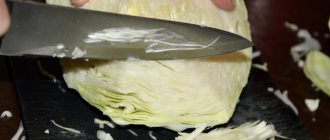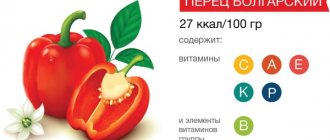Orange is an evergreen plant reaching a size of about 5 meters. China is considered the birthplace of the fruit. Oranges were brought to Europe in the 15th century from the Mediterranean and were unpopular for a long time, later gaining recognition only as a medicine to help cope with scurvy, viral infections and even the plague.
The fruit owes its name “orange” to the French king Louis IV, who adored it, and built special greenhouses for his orange trees. This low-calorie fruit came to Russia only in the 18th century, gradually becoming a favorite delicacy of the royal court.
Modern oranges, brought from the shores of the Mediterranean Sea or the USA, are considered one of the favorite delicacies, helping to restore vitamin balance and prevent the development of depression.
Kinds
Orange (calorie content for 1 piece is given below in the article) is a popular citrus fruit, first mentioned in literature as the “golden apple of the Hesperides,” taken by Hercules during the 11th labor.
Depending on the size of the fruit and color, the following are distinguished:
- light fruits with orange flesh;
- blood oranges with ruby-colored insides.
The light varieties are:
- Oval oranges , native to Spain and Portugal, are distinguished by their round or oval shape, soft, sour-tasting orange flesh, thin skin and large number of seeds.
- Umbilicals , native to the United States, grow on a special variety of thornless trees. They are very large in size, have a dense, easily removable skin and orange pulp with a pleasant sweet and sour taste.
Blood oranges were born in Sicily after a mutation of the common light variety. A distinctive feature of these fruits is the ruby pulp, which gets its color due to the content of antacids and coloring pigments in it.
Varietal diversity
There are a lot of orange varieties, most of them can be bought in regular stores and markets, to make the choice easier, there are the following groups of varieties:
- Ordinary - juicy fruits, which are characterized by yellow flesh, orange skin of medium thickness and many seeds;
- Kings are small-sized fruits, pulp and skin with dark red stains. The juiciness is average, and the taste is quite sweet;
- Umbilical fruits are sweet and juicy. Their flesh is bright orange in color. They stand out among others in that they have a second rudimentary fruit of small size;
- Jaffa fruits are huge in size with a thick, bumpy skin that is easy to peel.
Calorie content, BJU, GI
The calorie content of 1 orange is 35-42 kcal.
BJU:
| Element | Quantity |
| Squirrels | 0,9 |
| Fats | 0,2 |
| Carbohydrates | 8.1 g |
| Alimentary fiber | 2,2 |
| Water | 87% |
Chemical composition of the product:
| Elements | Quantity |
| Vitamins |
|
| Microelements |
|
| Essential amino acids (responsible for the growth and restoration of muscle tissue) |
|
| Nonessential amino acids (participate in the formation of hormones, normalize metabolism and normalize the activity of all body systems) |
|
| Saturated fatty acids (the main source of human energy) | 0.025 gr. |
| Polyunsaturated fatty acids (participate in the formation of cell membranes) | Omega-3 (0.011); Omega-6 (0.031) |
| Phytoncides | Natural antibiotics that help fight colds and viral infections |
| Aroma oils |
|
| Pectins | Polysaccharides that absorb harmful substances like a sponge and help cleanse the body of waste and toxins. |
Orange.
The calorie content allows you to consume the fruit without harming your figure. The hypoglycemic index of a fresh orange is 35 units, in fresh orange it is about 45 units.
How many calories are in one medium tangerine and in 100 grams with and without peel: table
Compared to an orange, tangerine is much sweeter, but this citrus is no less beneficial for human health, and most importantly, for weight loss.
| Product | Squirrels | Fats | Carbohydrates | Calorie content |
| Mandarin 1 piece (medium size) | 1 | 0,2 | 7 | 53 kcal |
| Tangerine zest 100 g. | 1,5 | 0,2 | 4,5 | 36 kcal |
| Tangerine pulp 100 g. | 0,8 | 0,2 | 7,5 | 95 kcal |
Nutritional value of tangerine
Benefits of fruit
Orange, calorie content 1 pc. which does not exceed 46 kcal, is a natural antioxidant that helps fight cancer. Regular consumption of juice and fruits as food destroys the destructive effects of free radicals, which cause the appearance of atypical neoplasms.
Due to their low calorie content, oranges are very compatible with any diet, as they help dull the feeling of hunger while simultaneously promoting the breakdown of fatty tissue.
Including the product in your diet will allow you to:
- enrich the body with vitamins, minerals and pectins that regulate the functioning of the gastrointestinal tract;
- speed up metabolic processes;
- overcome incipient viral infections and reduce high fever;
- cleanse the slagged body;
- reduce the processes of fermentation and putrefaction in the intestines;
- normalize blood pressure;
- improve blood quality;
- stabilize the functioning of the nervous, cardiovascular and endocrine systems.
The fruit is especially useful for pregnant women, since its daily consumption, due to its high content of folic acid and vitamin E, prevents the development of fetal defects. Smokers should be sure to drink orange juice diluted with water to replenish the level of ascorbic acid lost under the influence of nicotine.
How do oranges and tangerines burn calories?
The “secret” of orange as a fruit for weight loss is that it is rich in dietary fiber. It is they who, when they enter the stomach, begin to swell. The swollen fibers create a feeling of fullness, filling the stomach. Next, orange or tangerine fibers enter the intestines and improve peristalsis there (they affect the intestinal muscles, improving the process of digestion and bowel movements).
How do oranges and tangerines help you lose weight?
Harm
Despite the high content of useful substances, excessive consumption of oranges can provoke an allergic reaction.
To avoid negative consequences, you should eat:
- children no more than 1 orange;
- adults 2-3 fruits.
In addition to being highly allergenic, the high content of natural acid has a destructive effect on tooth enamel, so dentists strongly recommend performing oral hygiene after each consumption of citrus fruits.
How many calories are in 100 grams of dried and dried tangerines?
In a dried fruit store you can often find such delicacies as dried or dried citrus fruits. These are mainly oranges and tangerines. They are prepared by long drying or cooking in sugar syrup. Dried tangerines are obtained by smoking.
Of course, as a result of heat treatment, some of the vitamins and nutrients “evaporate.” However, if you want to “treat yourself to something sweet,” it is much healthier to eat 1-2 dried or sun-dried tangerines than a chocolate bar or candy.
| Product | Squirrels | Fats | Carbohydrates | Calories per 100 g. |
| Dried tangerines | 0 | 0 | 14 | 53 kcal |
| Dried tangerines | 13 | 44 | 23 | 520 kcal |
IMPORTANT: For those who regularly count calories, it is important to know that it is healthier to eat dried tangerines than dried ones. However, dried fruits do not contain any beneficial microelements, and carbohydrates are concentrated in large quantities.
Menu for diet
Orange (calorie content of 1 piece does not exceed 35-46 kcal, allowing the product to be the basis of fasting days and diet) is a tasty dietary product that helps replenish the body's need for vitamins during a diet and prevent the development of depression.
People who adhere to dietary restrictions for the purpose of weight loss are allowed to eat up to 5-6 pieces a day. fresh oranges, prepare the juice, half mixed with water and beat the fruits with a blender in the form of a smoothie. In addition to oranges, protein products (meat, fish, poultry, eggs, cottage cheese), cereals and clean water are added to the diet.
3 week diet
It is considered quite strict, but the inclusion of oranges helps add flavor to the diet.
Nutrition rules:
- the daily diet is divided into 3 meals;
- weekly nutrition is limited to a certain diet of products, combined at will.
Diet menu:
| 1 Week |
|
| 2 week |
|
| 3rd week |
|
The amount of food eaten per day is not limited, but the diet cannot be changed. In 3 weeks of eating this way you can get rid of 5-8 kg.
3 day diet
Helps cleanse the body of excess feces and toxins before important events.
It consists of strict adherence to a dietary diet that requires a meal plan consisting of:
- boiled and fresh vegetables and fruits;
- steamed meat, poultry, fish;
- black bread crackers;
- low-fat cheese;
- cottage cheese
You are allowed to eat no more than 100 grams per meal.
Meals for 3 days:
| 1st day | |
| Breakfast |
|
| Dinner |
|
| Dinner |
|
| 2nd day | |
| Breakfast |
|
| Dinner |
|
| Dinner |
|
| 3rd day | |
| Breakfast |
|
| Dinner |
|
| Dinner |
|
In addition to the above products, you should drink at least 1.5-2 liters of clean water per day. You can drink black coffee and green tea without sugar (you can add skim milk).
Chicken-orange diet
Based on daily consumption of 1 kg of boiled (steamed) chicken meat and 5-6 oranges, divided into 5-6 doses (200 g each).
During the diet, you should drink plenty of water and (or) green tea, to which you can add skim milk.
Spring fruit diet
Helps cleanse the body of waste, toxins and “garbage”. Recommended for use in late spring or summer, as it requires eating a large variety of fruits.
Daily diet:
| Breakfast |
|
| Snack | orange |
| Dinner |
|
| Snack | Apples |
| Dinner |
|
The diet does not change for 5 days. If you wish, you can eat a little (50-60 grams) of low-fat cottage cheese in the morning, seasoning it with bio-yogurt.
Fasting 7-day diet
Allows you to get rid of 7 kg in a week.
Daily nutrition is limited to a strictly defined set of products:
| 1st day |
|
| 2nd day | Boiled eggs (2 pcs.) are added to the set of products for the 1st day. |
| 3rd day |
|
| 4th and 5th days |
|
| 6th and 7th days |
|
A fasting diet helps you lose weight quickly (up to 1 kg per day). It is best to eat oranges during meals or 30 minutes after the main meal. Eating citrus fruits at night is not recommended due to the large amount of fructose and ascorbic acid, which can irritate the esophagus.
Orange diets are contraindicated for:
- chronic gastrointestinal diseases (pancreatitis, cholecystitis, peptic ulcer);
- gastritis, with increased stomach acidity;
- diabetes mellitus;
- tendency to allergic reactions.
Other Ways to Lose Weight with Oranges
In addition to the diet, orange aromatic oils used for massage and wraps help you lose weight. In combination with proper nutrition and reasonable physical training, this method will quickly rid the body of excess fluid, reduce the severity of cellulite and help get a boost of energy. Wrap recipes.
Option 1
3 drops of juniper, orange and cypress esters are mixed with 2 tbsp. olive oil, applied to problem areas of the body and covered with cling film (transparent).
In 20 minutes. the mixture is removed with warm water.
Option 2
30 min compress from a mixture of rose (5 drops), orange (6 drops), lavender (3 drops) esters and 1 tbsp. sesame oil applied under a layer of cling film helps to remove excess weight and eliminate the appearance of cellulite.
Option 3
A mixture of 100 grams helps improve the condition of the skin and remove excess water. heavy (at least 20%) cream, 10 drops of orange ether and 100 grams of blue clay diluted with warm water to a thick sour cream. This mixture is applied to medical bandages and applied to problem areas of the body for 20-30 minutes. The compress should be repeated 1-2 times a week.
Orange peels are naturally green in color. Fruits grown in temperate climates turn orange when exposed to cold temperatures, which cause the destruction of chlorophyll.
This does not happen in warm climates, so fruits collected for export are artificially given an orange color by spraying with harmless ethylene gas, which is produced naturally by melons, pears and apples. When choosing oranges on the counter, it is worth remembering that the ripest low-calorie fruit weighs more than others.
Since oranges are evergreen, they bear fruit all year round, but the ripest fruits appear on the shelves only in November and December. In the summer, a store-bought orange can be very sour, difficult to peel and have a large number of seeds.



